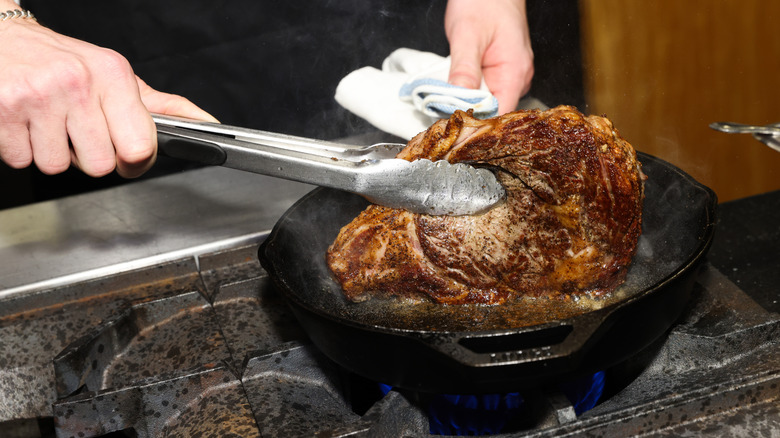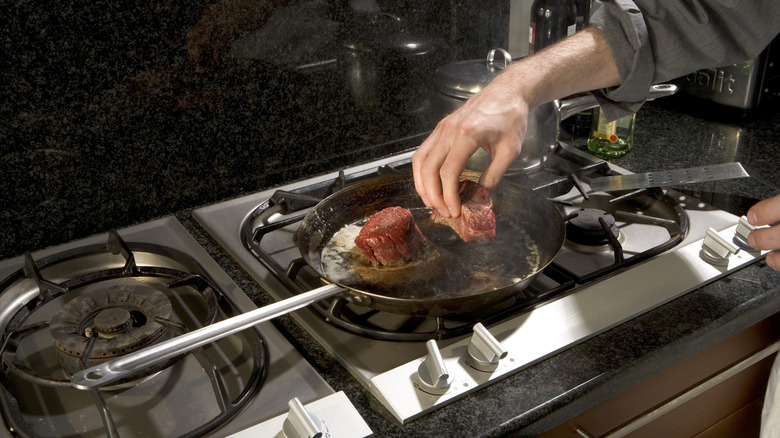The No-Tools-Required Meat Doneness Test For When You Can't Find Your Meat Thermometer
Everyone knows the importance of cooking meat to the correct temperature. Not doing so puts you at risk of food poisoning, and no one wants to be the friend who sent everyone home with e. coli. This is why knowing how to use a meat thermometer is a valuable skill to have, but if you don't have one at home, how can you be sure that your meat is fully cooked? Luckily, there's a low-tech test that you can do to determine doneness, according to chef Richard Sandoval, and the only equipment required is your finger.
"The touch test is all about comparing the firmness of the meat to different parts of your hand as your fingers touch your thumb," Sandoval told us. This may take a few test runs to start feeling confident, but the more practice you get with it, the more it will make sense. "Raw feels like the base of your thumb when your hand is relaxed; medium rare feels like when you touch your index finger to your thumb, and so on," he advises.
Gordon Ramsay uses a similar test to determine steak doneness, though he uses his wrist to determine medium and well done. This is a trick that has been passed down from chef to chef for years. That said, it's still more art than science, and if you're less confident working with meat or are trying to be especially careful about food temperatures, it's not a foolproof substitute for an actual thermometer.
When to use and not use the touch test
As with many things in life, muscle memory and experience are the keys to understanding how to utilize this technique. According to Richard Sandoval, repetition will serve you well. "I tell home cooks to pay close attention to how the meat responds to gentle pressure, and to practice consistently with the same cuts to develop that tactile memory," he says.
It's also important to know which proteins are best suited for this method. "The touch test is most useful with cuts like steak or pork chops — larger, thicker cuts where the outer texture gives you a clue to the doneness inside," Sandoval explains. "But for poultry, especially chicken, I always recommend using a thermometer." Chicken is more of a risk for foodborne illnesses as it contains bacteria deeper in the meat than beef given its more permeable makeup — consider the fact that you're never asked in a restaurant what temperature you want your chicken cooked to. Bacteria in chicken are prevalent in the handling stage as well, which is why it can be helpful to rinse raw chicken in lemon juice for food safety.
While this test can stand in for technology in a pinch, there are also downsides. According to Sandoval, "It's useful, but subjective. ... Nothing replaces the accuracy of a good meat thermometer — especially when cooking for others." Sandoval went on to tell us, "There's no margin for error when it comes to food safety, and it's the only way to ensure the meat is fully cooked without overdoing it."


